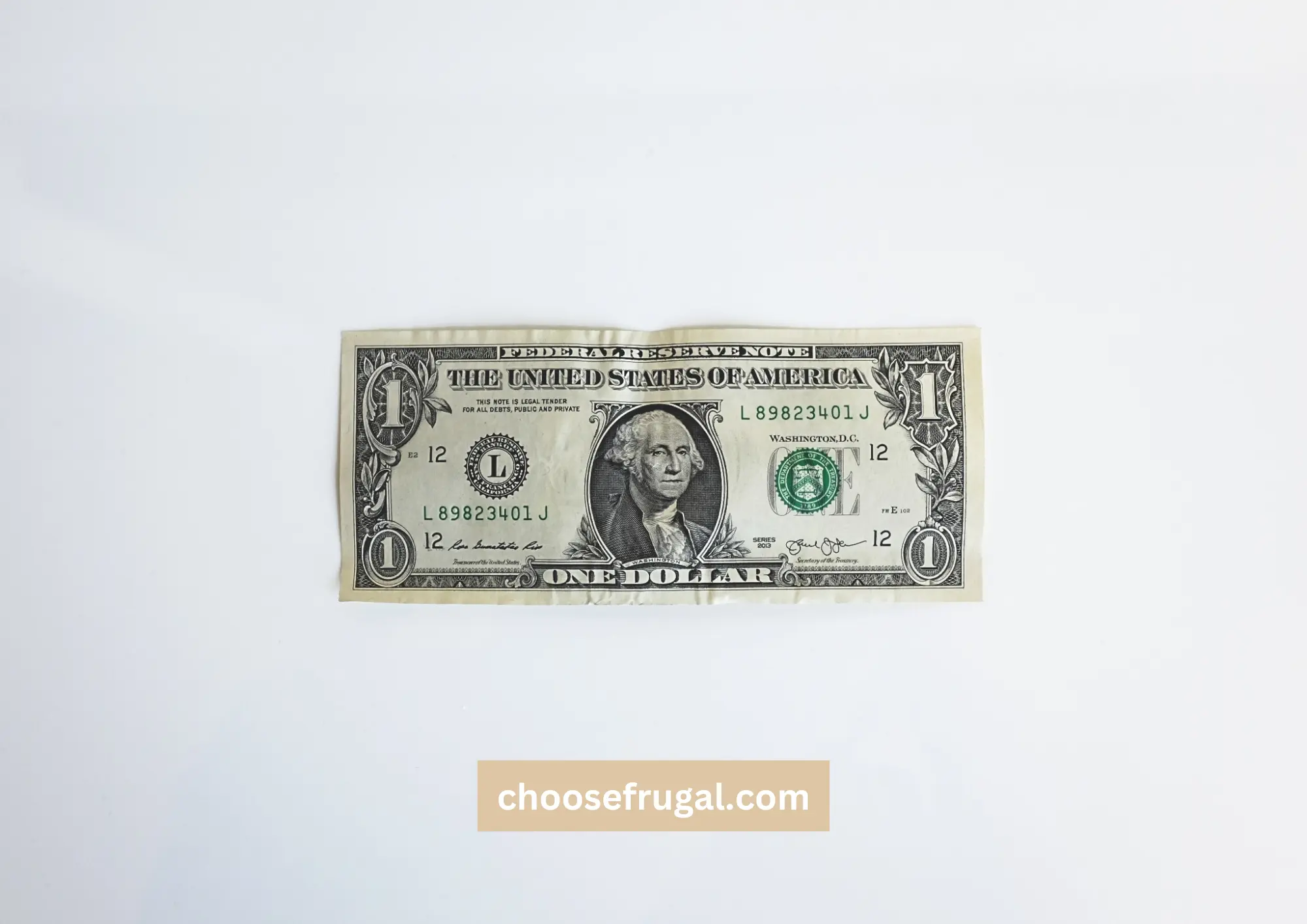
Embarking on a minimalist journey led to a powerful revelation: happiness cannot be found in material possessions. During college, the desire to accumulate more tech, gadgets, and clothes led to significant debt. However, embracing minimalism transformed this mindset and helped pay off mountains of debt in just two years. Here’s a closer look at how adopting minimalism helped pay off debt for me:
1) Kickstart with Decluttering
To adopt minimalism, begin by eliminating clutter from your living space. Simply organizing isn’t enough; it’s crucial to let go of unnecessary items. Marie Kondo‘s book, The Life-Changing Magic of Tidying Up, can provide inspiration and guidance during the decluttering journey.
2) The Rewards of Minimalism
Say No to Unnecessary Purchases

Adopting a minimalist mindset transforms the way material possessions are viewed. After decluttering, living with fewer items becomes not only possible but enjoyable. Consequently, purchases are made only when they truly add value to one’s life.
Overcome the Urge for Impulse Buys
Embracing minimalism makes it easier to resist impulsive purchases, even when they are on sale or aesthetically appealing. This approach is more effective in paying off debt faster than simply tracking expenses, as it leads to lasting changes in spending habits.
Curb Emotional Spending
Minimalism breaks the cycle of using shopping as a stress reliever. Rather than spending money to feel better, alternative coping mechanisms are explored, such as talking to friends, engaging in hobbies, or practicing mindfulness.
Invest in Quality Over Quantity
Minimalism emphasizes the importance of investing in high-quality items that last, without necessarily breaking the bank. This mindset can be applied to various aspects of life, from kitchenware and clothing to furniture and electronics.
Make Intentional Spending Decisions
A minimalist lifestyle encourages evaluating every purchase before buying. This extra step leads to more intentional spending habits and better financial control. The focus shifts from acquiring material possessions to investing in experiences and personal growth.
Cultivate Contentment with Less
Minimalism highlights the fact that very little is actually needed to live a fulfilling life. Although it’s natural to compare oneself to others, embracing minimalism helps build resilience and focus on what truly matters. This perspective fosters gratitude for what one already has, rather than constantly striving for more.
My Relationship With Money Before I Started On My Minimalist Journey

I’ve experienced a bit of a fluctuating relationship with money throughout my life. At times, I’ve welcomed it as a means to achieve financial prosperity, while at others, I’ve questioned its role in our lives and the mesmerizing hold it has on us all.
Regardless of our feelings towards it, money is undeniably crucial. This is true even for someone like me, who has a counter-culture minimalist perspective and has tried to resist the power of the monetary system.
Given money’s importance, it’s clear that debt is detrimental – really detrimental!
I don’t say this to make you feel worse about your circumstances. I, too, have faced the overwhelming burden of debt throughout my adult life.
Even with financially savvy parents and educating myself towards financial literacy, I found myself entangled in debt from the moment I had access to loans and credit cards.
Looking back on this tumultuous journey with debt stirs up emotions. However, I realize I’m grateful for the experience, as it has taught me the importance of debt-free living.
In this comprehensive blog post I will share what I’ve learned about transitioning from a strained relationship with money to using minimalism as a means to embrace a debt-free lifestyle.
So, without further ado, let’s delve into it.
10 Steps to Debt Free Living Through Minimalism

Step 1 – Let minimalism reshape your perspective on debt
Minimalism can be defined as the act of pinpointing the essentials in your life and bravely letting go of everything else. So let’s delve into the journey of how Minimalism Helped Pay Off Debt for me.
At its core, minimalism is about intentional living.
In the realm of minimalism, anything non-essential is considered clutter. This can include physical possessions, relationships, calendar commitments, overflowing inboxes, or anything excessive and unneeded.
However, debt may be the most harmful form of clutter. To reiterate, debt is the worst kind of clutter.
Consider this: when your home is filled with physical clutter, it feels stifling. You waste time searching for items when needed. You run out of space, transforming your dining table into storage rather than a place to eat, your garage into storage rather than a place to park, and so on.
Debt, on the other hand, can sometimes contribute to acquiring more physical clutter, such as oversized homes, extra vehicles, clothing, or decor.
Moreover, you lose money (which equates to hours worked) to lenders due to harsh interest rates.
Debt creates clutter on multiple levels and results in a lose-lose situation for everyone (except of course the banks).
That’s why addressing your debt with urgency is crucial.
Step 2 – Determine the root cause of your debt

To adopt a debt-free lifestyle, it’s crucial to understand the habits and decisions that led to your debt. Reflect on the timeline of purchases made on credit and consider the reasons behind each decision. Acknowledging your past financial choices is an essential step in addressing your debt situation.
Step 3 – Establish a life-changing goal

Repeating the idea that debt is undesirable won’t automatically lead to debt-free living. You need a more powerful motivation to drive your journey towards financial freedom. Setting a tangible, meaningful goal can provide the motivation needed to eliminate debt.
For example, moving to another country, paying off a mortgage within a certain timeframe, or starting a dream business might be your ultimate goal. Choose a goal that excites you and serves as a constant reminder of why you decided you’re working to become debt-free.
Having a goal that inspires you will remind you why you started your journey to being able to say minimalism helped pay off debt for me!
Step 4 – Establish an emergency fund

Before making extra repayments on your debt, set aside $1,000 in a savings account as quickly as possible. Having an emergency fund is a well-known strategy in personal finance, providing financial confidence and peace of mind in case of unexpected expenses. It also helps avoid accruing more debt.
Step 5 – Create a debt-tracking spreadsheet
Set up a simple spreadsheet to track your debt, using software like Microsoft Excel, Apple Numbers, or Google Sheets. This will help you have a clear understanding of your overall debt balance.
Step 5.1 – Collect information on your debts
Gather the names, balances, interest rates, and minimum monthly repayments for all your creditors. You can find this information through online banking or by contacting your creditors.
Step 5.2 – Input balances into the spreadsheet
Create a table to include the name of each creditor, the remaining balance, and the interest rate for each debt. Total up your debt to get a clear perspective on how much you owe.
Step 5.3 – Prioritize your debt
Organize your debt by focusing on creditors with the highest interest rate. This approach helps you make progress on your debt more efficiently.
Step 5.4 – Develop a payment schedule for each debt
Create a payment schedule to track payments for each debt, which will help you feel progress on your journey to debt-free living. This schedule will serve as a roadmap for eliminating your debt.
Step 6 – Try to reduce the interest on each debt
Gaining clarity on your debt situation can be both empowering and discouraging due to the impact of interest charges. To minimize these charges, consider calling your bank to request a hardship rate or applying for a 0% interest balance transfer. Keep in mind that balance transfers aren’t a magic solution, and your behavior plays a crucial role in achieving debt-free living.
Step 7 – Determine your minimum viable income (MVI)
Before deciding on additional debt payments, review your living expenses. MVI refers to the lowest possible income you can live on and helps you distinguish between what you think you need to survive and what you actually need. Creating an MVI calculator, which is essentially a budget spreadsheet, will help you evaluate your expenses and potential savings.
In this process, consider different lifestyle options, such as your current expenses, projected frugal-level expenses, and ramen-level expenses. Minimalism can play a role in challenging your idea of frugal living and help you save money in the long run.
Step 8 – Develop a dynamic monthly budget
Traditional fixed monthly budgets don’t always work due to fluctuations in income and expenses. To address this, create a dynamic monthly budget that focuses on actual income and expenses each month. This approach helps you plan better and allocate resources more effectively. If you receive unexpected income or face unexpected expenses, update your budget accordingly. To better manage discretionary spending, consider using cash instead of a credit card for transactions.
Step 9 – Adopt minimalism for additional cash to pay off debt
Minimalism can help you save extra money and create additional funds to pay off your debts. Here are three tips:
1) Maintain a wishlist of items you need to buy: This helps you avoid impulse purchases and stay on track with your budget. A wishlist reminds you of essential items while keeping non-essential spending in check.
2) Downsize your property or move in with family: Reducing your housing expenses by downsizing or living with family members can help you allocate more money towards debt payments. Re-evaluate your priorities and consider if relocating is a viable option.
3) Sell your possessions: Decluttering your house and minimizing your possessions can generate extra cash to put toward your debt. Selling unnecessary items not only helps you financially but also fosters a minimalist mindset.
Watch this video by the Rachel Cruz Show on How Minimalist Living Can Help You Pay Off Debt
Step 10 – Refine steps 6 to 9 until the debt is paid off
Continue refining and repeating steps 6 to 9 to make progress on your debt payments:
Step 6 (Repeat) – Minimize interest on each debt: As you pay off debts and improve your credit rating, you may be offered better balance transfer deals. Use these opportunities to transfer the remaining debt to a 0% interest account.
Step 7 (Repeat) – Calculate your minimum viable income (MVI): As you make progress, your financial situation may change. Continuously update your MVI calculator to better plan your expenses and make more informed decisions.
Step 8 (Repeat) – Develop a dynamic monthly budget: Adjust your budget as needed, based on the data you gather each month. For example, if your spending on food changes, update the allocated amount accordingly.
Step 9 (Repeat) – Adopt minimalism for additional cash: Continuously challenge your minimalist boundaries and question what is essential in your life. You may discover creative ways to embrace minimalism to save money, such as going car-free to reduce expenses and environmental impact.
The above ten steps are a summary of an incredibly well-written comprehensive piece of content by Michael Ofei on Minimalist Vegan. I combined it with what I have learned over the years and tried to retain the core principles. For the full guide read A Minimalists Guide To Debt-Free Living on their blog.
FAQs about Minimalism and Money

How do the minimalists make money?
Minimalists, like everyone else, make money through various sources such as employment, entrepreneurship, or investments. The key difference is that they prioritize financial goals and focus on living within their means.
By adopting a minimalist lifestyle, they can often reduce expenses, save more, and invest in opportunities that align with their values and passions while saving money elsewhere. In some cases, minimalists may even turn their passion for simplicity into a career or side hustle, such as writing books, creating blogs (like this one), or offering workshops on the topic.
Do minimalists spend less money?
Generally, minimalists do spend less money, as they prioritize needs over wants and value experiences over material possessions. They adopt a more intentional approach to spending, carefully evaluating each purchase to ensure it adds value to their lives. This mindset helps them reduce impulse buys and resist consumerism, ultimately resulting in lower overall spending.
What do minimalists do with their money?
Minimalists allocate their money more intentionally, focusing on long-term financial goals, experiences, and personal growth. They often prioritize savings, emergency funds, and investments, ensuring a secure financial future. They may also dedicate resources to travel, education, or other experiences that contribute to their well-being and happiness.
Are minimalists actually happier?
While happiness is subjective and varies from person to person, many minimalists report increased contentment and satisfaction due to their lifestyle choices. By simplifying their lives, they can focus on what truly matters, such as relationships, experiences, and personal growth. This shift in mindset and priorities can lead to a more balanced, fulfilling life with reduced stress and mental clutter.
Living A Minimalist Lifestyle To Improve Your Finances
Embracing a minimalist lifestyle can have a positive impact on your finances. By focusing on needs rather than wants, reducing impulsive spending, and prioritizing long-term financial goals, minimalism can help you save money and achieve financial freedom.
Additionally, a minimalist lifestyle can lead to more intentional spending decisions, allowing you to invest in experiences and personal growth, ultimately contributing to a richer, more fulfilling life.
A Minimalists Guide To Debt-Free Living
Adopting minimalism can be a powerful tool on the path to debt-free living. By cultivating mindful spending habits, prioritizing needs, and re-evaluating the importance of material possessions, minimalists can allocate resources more effectively to pay off debt. Moreover, minimalism encourages financial goal-setting, such as building an emergency fund, saving for retirement, or investing in experiences, which can contribute to a secure and debt-free future.
How Minimalism Can Save You Money
Minimalism can save you money by helping you prioritize needs over wants, reduce impulse buys, and allocate resources more intentionally. By simplifying your lifestyle, you can minimize expenses, declutter your living space, and focus on the things that truly matter. As a result, you can save money, experience less financial stress, and invest in experiences, personal growth, and long-term financial goals.
Minimalism is not about owning and counting possessions but appreciating the value and joy they bring. By adopting this mindset, not only can debt be cleared, but a sense of contentment and gratitude can be cultivated, leading to a more fulfilling and financially secure life.
In conclusion
Achieving debt-free living requires a combination of discipline, planning, and embracing a minimalist mindset. By systematically following and refining the 10 steps, you can make significant progress in paying off your debts. Continuously evaluate your financial situation, adjust your budget, and explore new ways to save money and get out of debt again.
Embracing minimalism not only helps you in tackling debt but also leads to a more sustainable and mindful lifestyle. Stay committed to the process and keep pushing your boundaries, and you’ll be on your way to financial freedom and a more intentional way of living. You’ll see that the minimalist lifestyle paid off, just give it some time!
What benefits have you experienced from adopting a minimalist lifestyle?
Also read:
Crafting a Practical Budget: A Comprehensive Guide to Financial Planning
18 Actionable Steps for Millennials to Build a Strong Financial Future
Best Wedding Reception Order of Events for Your Big Day (4 Steps to Planning)
11 Tips For Cheap Groceries (How To Save Money On Groceries)
9 Frugal living tips for 2022 (and Beyond)
15 Ideas For Minimalist Christmas Decorations
Budgets for beginners: A guide to creating and sticking to one
10 Top Tips for Planning a Wedding on a Budget You’ll Love
15 Essential Tips for a Minimalist Kitchen (Even in Compact Spaces)
The 10 Benefits of Living in a Small Minimalist Apartment on a Budget
P.S. Want to know when our next post lands and get our free ebook on how to live frugally? Then click the link below.